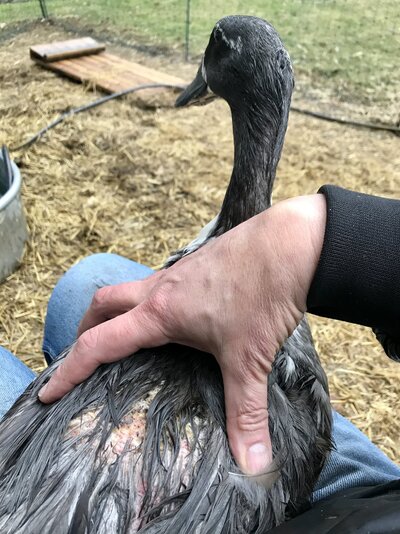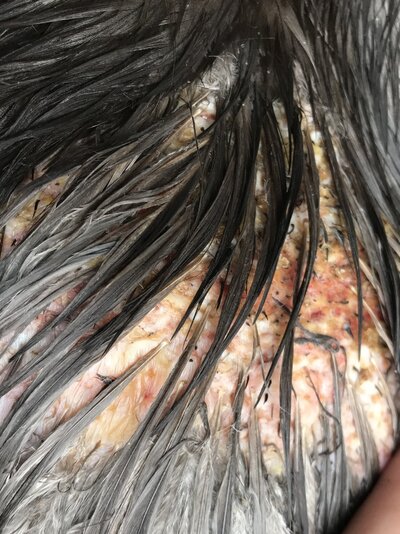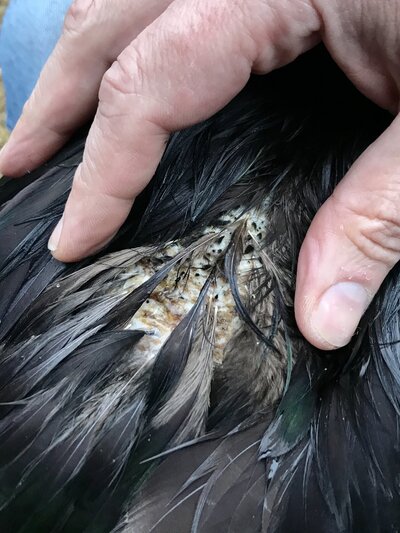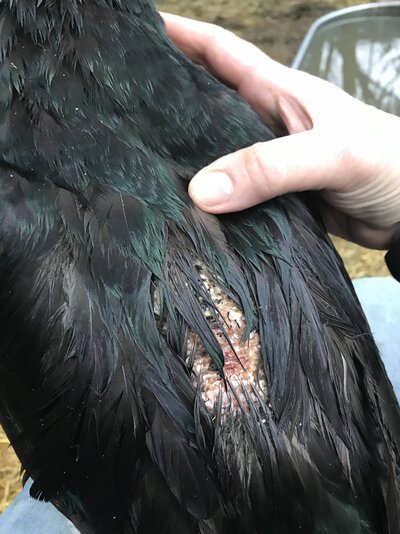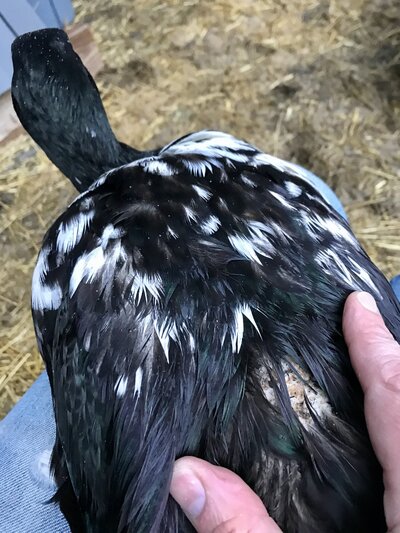This is our first spring with a drake and females. I noticed today that all four of our females have significant bald, irritated patches of skin on their backs, beneath their wings. My first thought is that they're a result of aggressive mating, especially because the Swedish Blue, who is the worst affected, seems to be the drake's preferred partner (she also seems like she's lost a little weight, and may have a mild case of wet feather...?)
I've most often heard of females developing bald spots on the backs of their heads and their necks from mating, but not their backs. I'm alarmed by the look of this, and I'm wondering if it's potentially something else, maybe parasite or a skin condition of some type.
I've applied Vetrimycin to the affected areas, and I'm isolating the male. If aggressive mating is the cause, is there anything else I can give these girls to help them heal up, other than good food and clean water?
Thanks so much for any help you can offer. These forums are such a great thing.
I've most often heard of females developing bald spots on the backs of their heads and their necks from mating, but not their backs. I'm alarmed by the look of this, and I'm wondering if it's potentially something else, maybe parasite or a skin condition of some type.
I've applied Vetrimycin to the affected areas, and I'm isolating the male. If aggressive mating is the cause, is there anything else I can give these girls to help them heal up, other than good food and clean water?
Thanks so much for any help you can offer. These forums are such a great thing.

